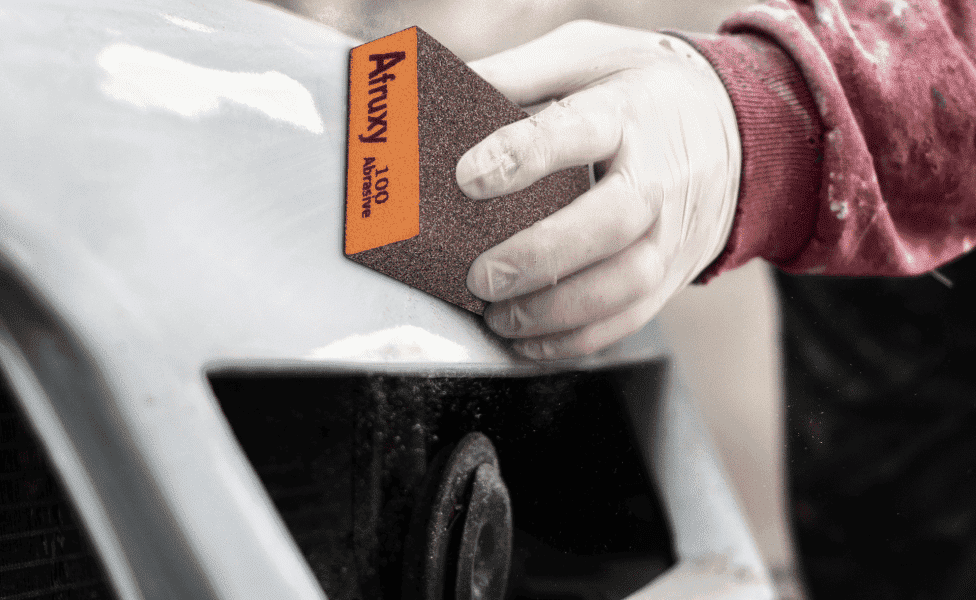Wondering what grit sandpaper for refinishing hardwood floors? Refinishing hardwood floors can be a rewarding DIY project that brings new life to your home’s interior. Whether you’re restoring an old, worn floor or simply looking to give your hardwood a fresh, updated look, one of the critical aspects of the process is choosing the right grit sandpaper. In this comprehensive guide, we will explore the world of sandpaper grits and help you understand what grit sandpaper is best suited for refinishing hardwood floors.
Before we dive into the specifics, it’s essential to recognize that sanding hardwood floors is a multi-step process. It involves the removal of old finish, leveling any uneven areas, and finally, smoothing the wood surface for the application of a new finish. Each of these steps requires a different grit of sandpaper.
Understanding Sandpaper Grit
Sandpaper is categorized by its grit number, which represents the coarseness or fineness of the abrasive particles embedded in the paper. The lower the grit number, the coarser the sandpaper; conversely, the higher the grit number, the finer the sandpaper. Grit numbers typically range from 24 to 2000 or more, with each serving a specific purpose in various sanding tasks.
For hardwood floor refinishing, you’ll primarily work with coarse, medium, and fine grit sandpapers. Let’s break down the steps and determine which grit is appropriate for each.
Step 1: Removing the Old Finish
The first step in refinishing hardwood floors is removing the old finish or any deep scratches and imperfections. For this task, you need a coarse grit sandpaper, typically in the range of 24 to 36 grit.
- 24 to 36 Grit: This extremely coarse sandpaper is designed to strip away old finish, paint, or deeply embedded stains effectively. It’s not suitable for smoothing the wood but serves as a powerful material removal tool.
During this step, you’ll use a drum sander, which is a heavy-duty machine that can quickly cover large areas of your hardwood floor. Be sure to follow safety precautions, wear protective gear, and keep the sander moving to avoid gouging the wood.
Step 2: Leveling and Smoothing
After you’ve stripped the old finish and removed imperfections, the next step involves leveling the floor and smoothing out any uneven spots. This is where medium grit sandpaper comes into play.
- 60 to 80 Grit: Medium grit sandpaper is perfect for leveling the surface and removing scratches left by the coarse sandpaper. It prepares the wood for the final sanding stages by creating a more uniform and smooth surface.
Use a floor edger or orbital sander for this step, focusing on the edges and areas that the drum sander couldn’t reach. Sand with the grain of the wood to avoid creating swirls or patterns.
Step 3: Preparing for Finish
Once you’ve leveled the floor and achieved a uniformly smooth surface, it’s time to prepare the wood for the finish. This involves removing any remaining scratches and creating a fine, ready-to-finish surface.
- 100 to 120 Grit: Fine grit sandpaper is ideal for preparing the wood for finishing. It smoothes out the surface, removes any fine scratches left by the medium grit sandpaper, and provides a clean canvas for staining or applying a clear finish.
For this step, use a random orbital sander, which is less aggressive than the previous sanders and ensures a smooth, swirl-free finish. Sand with the grain, working your way across the entire floor.
Step 4: Final Sanding
The final sanding step is all about achieving a flawless, glass-like finish on your hardwood floors. For this, you’ll use a very fine grit sandpaper.
- 150 to 220 Grit: Extra fine grit sandpaper is perfect for the final sanding of hardwood floors. It removes any remaining imperfections, smoothes out the wood to perfection, and prepares it for staining or applying a protective finish.
This step is critical for achieving a professional-looking result. Sand with great care and attention to detail, ensuring that the entire surface is even and free from any visible flaws.
Tips for Successful Sanding
- Wear Protective Gear: Safety first! Always wear protective gear, including goggles, ear protection, a dust mask, and knee pads when sanding hardwood floors.
- Keep the Floor Clean: Regularly clean the floor between sanding grits to remove dust and debris. A clean surface ensures a smoother finish.
- Test in an Inconspicuous Area: Before you start sanding the entire floor, test your chosen sandpaper grit in a small, inconspicuous area to ensure it provides the desired result.
- Go with the Grain: Always sand with the grain of the wood to avoid creating swirl marks or scratches.
- Change Sandpaper Regularly: As sandpaper wears out, it becomes less effective. Change it regularly to maintain consistent results.
Conclusion
Refinishing hardwood floors is a labor-intensive project, but the results are well worth the effort. Choosing the right grit sandpaper for each step of the process is crucial for achieving a smooth, beautiful finish. Remember that the grit number you select depends on the specific task you’re performing, with coarser grits for material removal and finer grits for finishing touches.
By following the guidelines outlined in this comprehensive guide, you’ll be well-equipped to tackle your hardwood floor refinishing project successfully. With patience, attention to detail, and the right sandpaper, you can transform your worn and tired hardwood floors into stunning, like-new surfaces that enhance the beauty of your home.
For all your sandpaper and hardwood floor refinishing needs, be sure to check out Afruxy, where you can find a wide range of high-quality sandpaper and professional-grade tools to help you achieve outstanding results on your next home improvement project. Happy refinishing!



